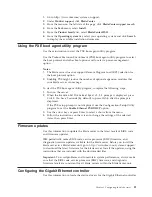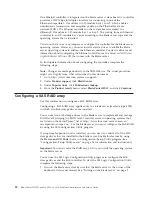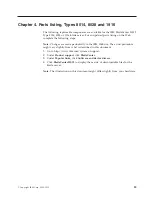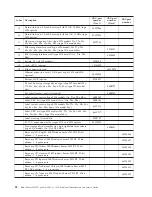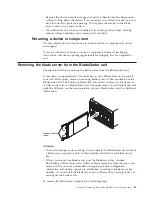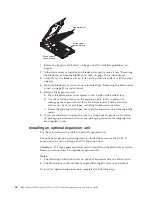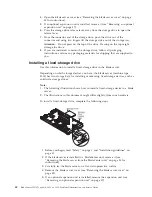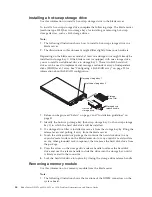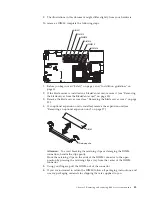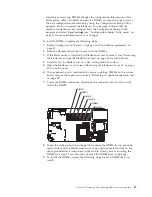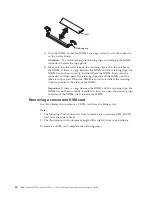
Notes:
a.
When any blade server or device is in any I/O-module bay 7 through 14,
power modules must be installed in all four power-module bays. For
additional information, see the
Installation and User’s Guide
that comes with
the BladeCenter unit.
b.
To help ensure proper cooling, performance, and system reliability, make
sure that each I/O-module bay on the front of the BladeCenter unit contains
a blade server, expansion unit, or blade filler. Do not operate a BladeCenter
unit for more than 1 minute without a blade server, expansion unit, or
blade filler in each I/O-module bay.
4.
Make sure that the release handles on the blade server are in the open position
(perpendicular to the blade server).
5.
Slide the blade server into the I/O-module bay until it stops.
6.
Push the release handles on the front of the blade server to the closed position.
7.
Turn on the blade server (see “Turning on the blade server” on page 9 for
instructions).
8.
Make sure that the power-on LED on the blade server control panel is lit
continuously, indicating that the blade server is receiving power and is turned
on.
9.
If you have other blade servers to install, do so now.
If you reinstall a blade server that you removed, you must install it in the same
blade server bay from which you removed it. Some blade server configuration
information and update options are established according to blade server bay
number. Reinstalling a blade server into a different blade server bay number from
the one from which it was removed can have unintended consequences, and you
might have to reconfigure the blade server.
If this is the initial installation of the blade server in the BladeCenter unit, you
must configure the blade server through the Configuration/Setup Utility program
and install the blade server operating system. See the
Installation and User’s Guide
for details. If you have changed the configuration of the blade server or if you are
installing a different blade server from the one that you removed, you must
configure the blade server through the Configuration/Setup Utility, and you might
have to install the blade server operating system. Detailed information about these
tasks is available in the
Installation and User’s Guide
.
Removing and replacing Tier 1 customer replaceable units (CRUs)
Use this information for removing and replacing Tier 1 CRUs.
Replacement of Tier 1 CRUs is your responsibility. If IBM installs a Tier 1 CRU at
your request, you will be charged for the installation.
Removing the blade server cover
Use this information to remove the blade server cover from the blade server.
Note:
1.
If the blade server has an optional expansion unit in place of the blade server
cover, remove it (see “Removing an optional expansion unit” on page 37).
2.
The illustrations in this document might differ slightly from your hardware.
To remove the blade server cover, complete the following steps.
Chapter 5. Removing and replacing blade server components
35
Summary of Contents for BladeCenter HS12 Type 1916
Page 1: ...BladeCenter HS12 Type 8014 8028 or 1916 Problem Determination and Service Guide...
Page 2: ......
Page 3: ...BladeCenter HS12 Type 8014 8028 or 1916 Problem Determination and Service Guide...
Page 36: ...24 BladeCenter HS12 Type 8014 8028 or 1916 Problem Determination and Service Guide...
Page 186: ...174 BladeCenter HS12 Type 8014 8028 or 1916 Problem Determination and Service Guide...
Page 190: ...178 BladeCenter HS12 Type 8014 8028 or 1916 Problem Determination and Service Guide...
Page 198: ...186 BladeCenter HS12 Type 8014 8028 or 1916 Problem Determination and Service Guide...
Page 203: ......
Page 204: ...Part Number 60Y1601 Printed in USA 1P P N 60Y1601...

